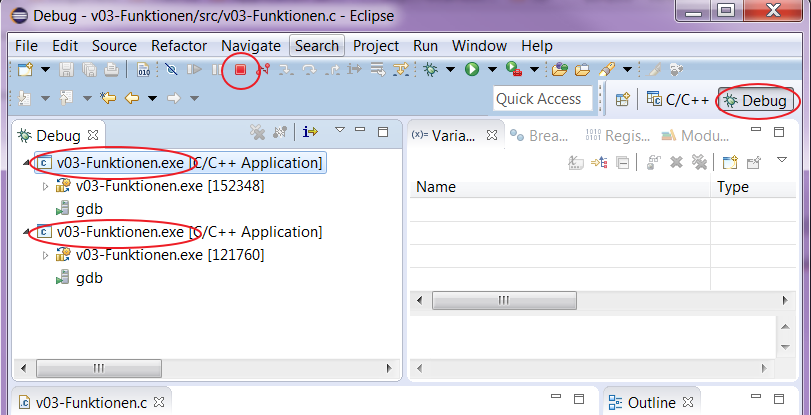

Debugging is enabled in the new makefiles by commenting out the #CFLAGS += -flto -fno-builtin (link time optimization) in addition to setting -O0 and -g3 to the compiler options.

The project makefiles became standalone in SDK v.7 and later, meaning that they do not depend on the mon anymore. Difference to be aware of is that the folder structure and makefiles has changed. Recommend using the latest SDK even though v.6.1.0 was used in this blog.

Regardless, it still it took me some time to get it all working so I have described my approach for importing and debugging SDK 6.0 exampe projects below.ĭownload nRF51 SDK from and use the SDK zip installer. Inspired by other devzone users I found out that the easiest solution to setup Eclipse with debugging is probably by using the GNU ARM eclipse plug-in from. So I thought I could make a blog post to share my setup and hopefully help others who are also new to Eclipse and GCC. I.e., successfully importing and debugging of example projects from the nRF51 SDK. It finally seems like I have figured out an approach that works for me. In this HOWTO we define the IDL of ShapeType-the data type Shapes Demo uses.I have noticed that there have been several questions on development with Eclipse and GCC, and I have also been trying myself for quite some time to make it work properly. The first step is to define your data types in a text file using IDL. Note 2: If you want to create a Eclipse project for a Java application, take a look at the solution How do I create a RTI Connext Java application in Eclipse? in our Knowledge Base. It is also important to open the C/C++ perspective on Eclipse to see the options described in this document. If you don’t have these tools go to and extract them on top of your current Eclipse installation directory. Note 1: This HOWTO assumes you have Eclipse IDE with tools for C/C++ developers installed. Finally, in Section 4 we configure Eclipse to run our Connext DDS application.In Section 3 we create and set up the Eclipse project to build our C/C++.In Section 2 we generate the code of our application using rtiddsgen.The purpose of this document is to describe how to use Eclipse to develop C/C++ Connext DDS applications.


 0 kommentar(er)
0 kommentar(er)
